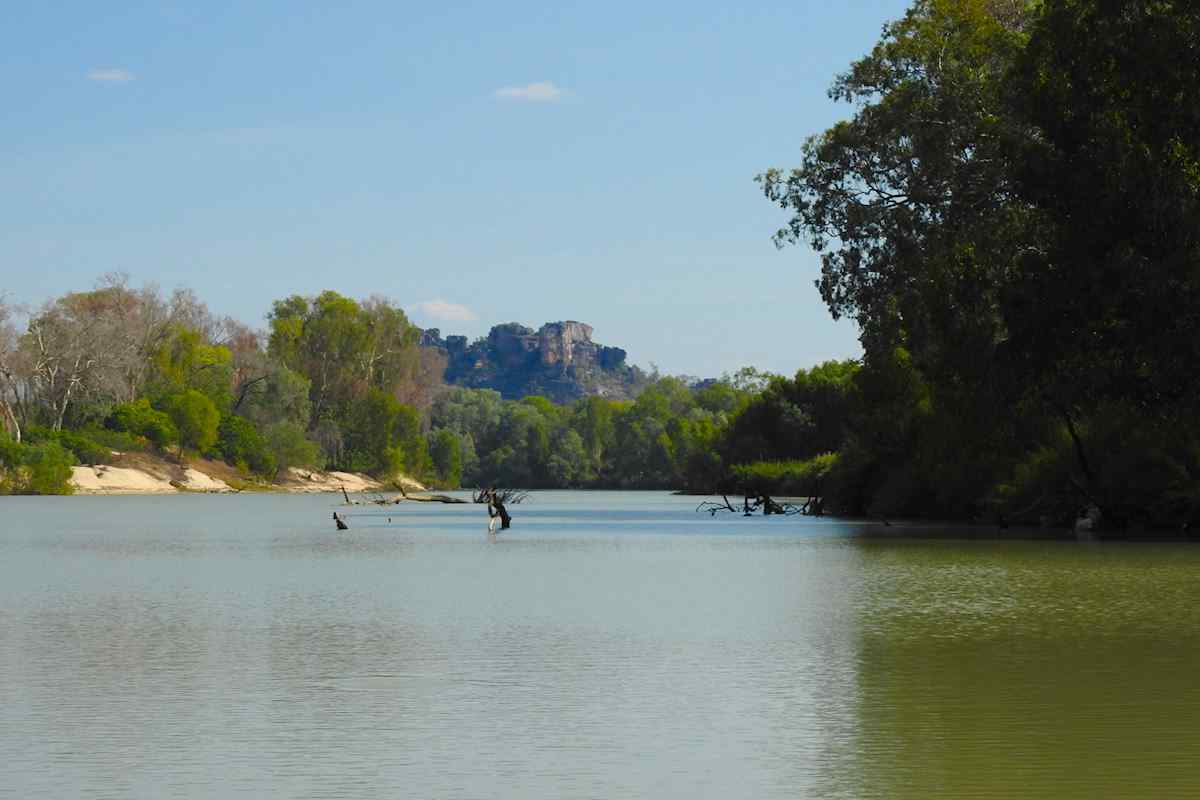Because Arnhem Land is Aboriginal land, a permit is needed for travel there. But I was going on a tour, which means travel permits are taken care of.
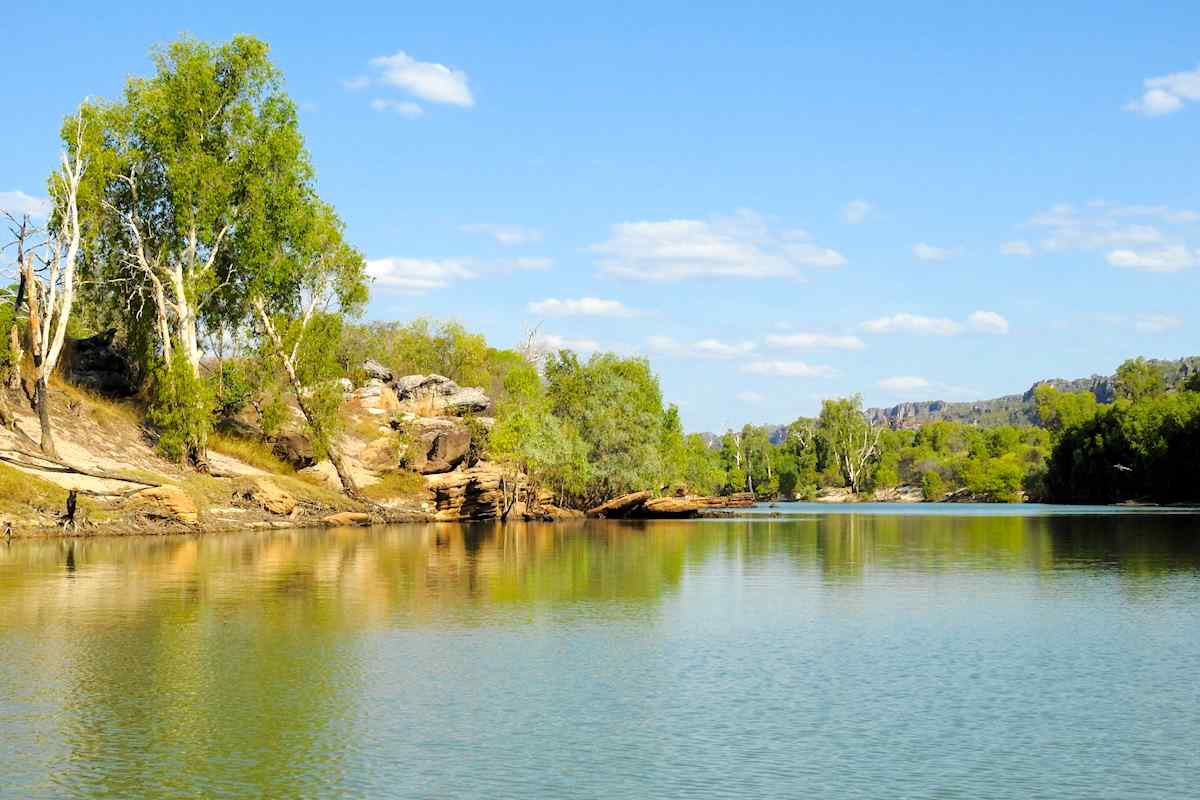
I started with a boat ride down the East Alligator River, which marks the border between Kakadu and Arnhem Land. It is believed this river has the largest number of crocs in the world. From the boat there are literally crocs on view everywhere you look.
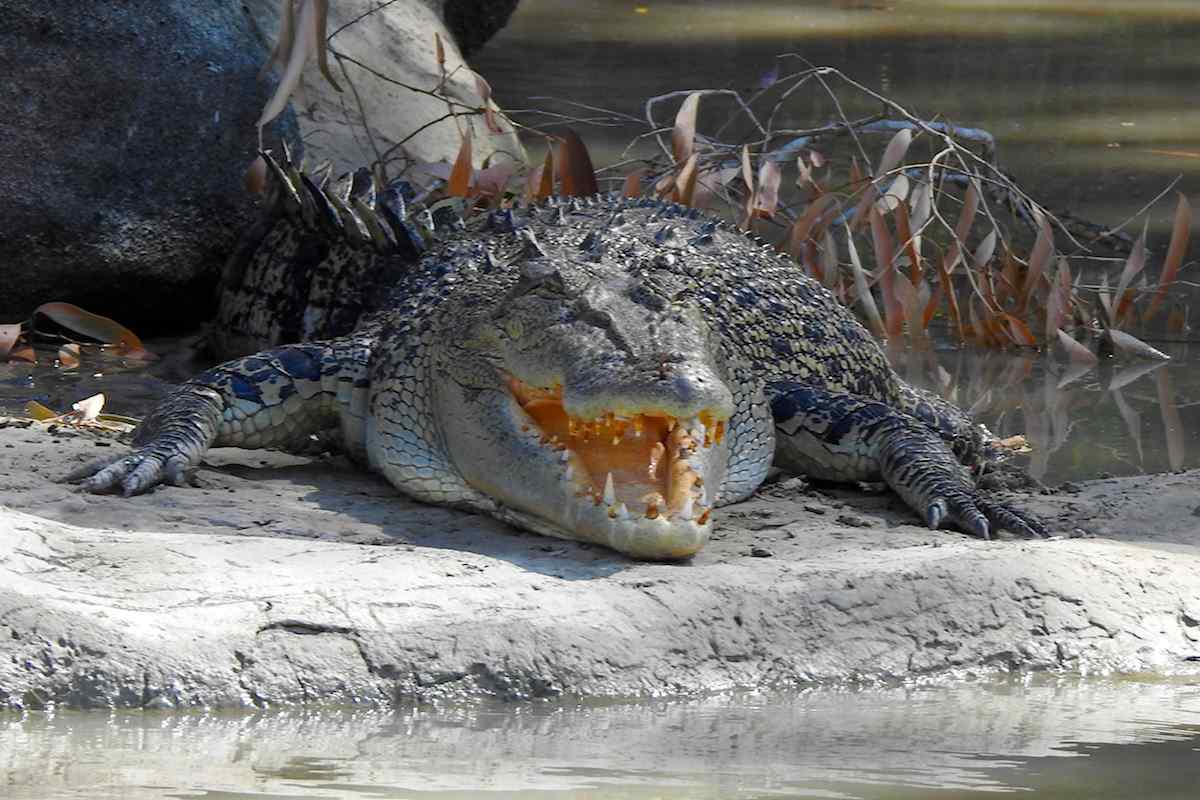
The river at this point is still salty and tidal, which makes the water murky. Any crocs sinking in the water become invisible, scarcely leaving a ripple. Further upstream the water becomes fresh and is much clearer.
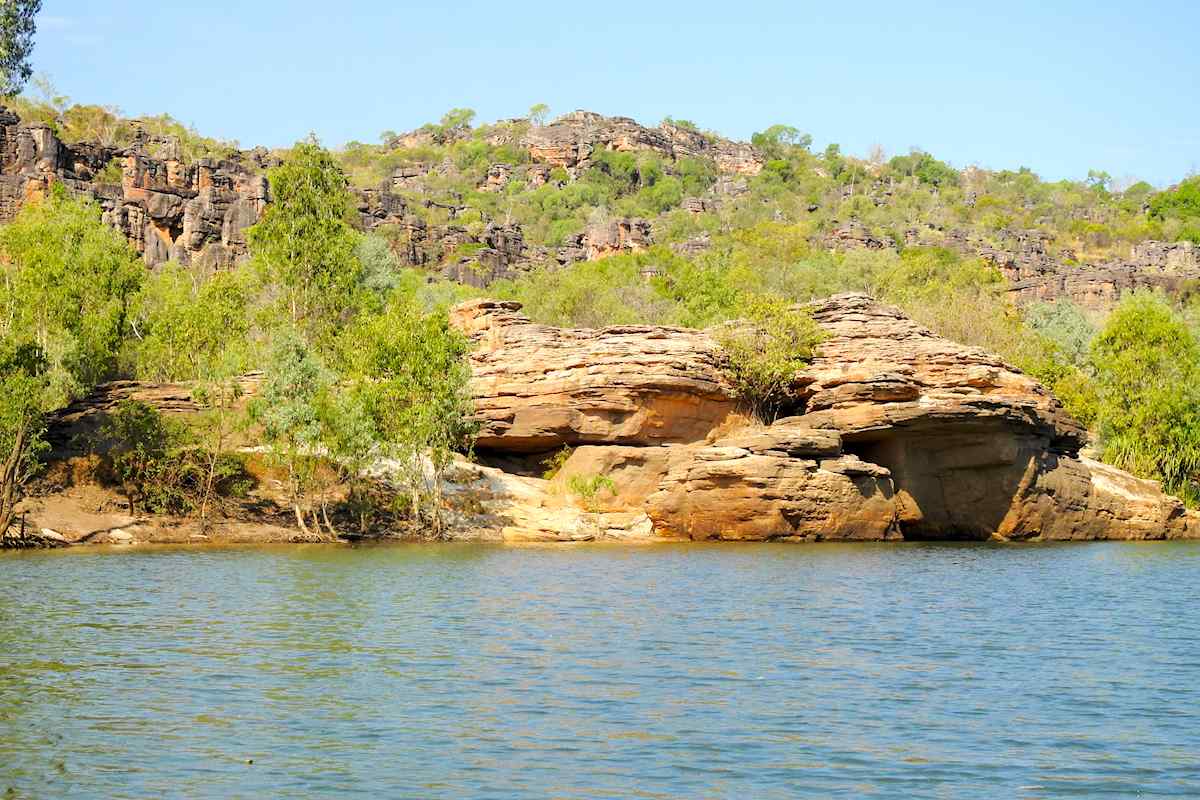
Following the river upstream, there are incredible views of the amazing Arnhem Escarpment, which dominates this part of the country. Around 500kms long and 150kms wide, this enormous sandstone plateau acts as a massive sponge, retaining vast quantities of water during The Wet.
During The Dry this water is slowly released into many rivers and creeks, filling the billabongs and providing for the abundance of wildlife in the area.
Crossing the East Alligator River at the ford into Arnhem Land is quite an experience. As the tide changes, fish move with the water and the crocs have learnt to wait at the ford, catching fish as they swim with the tides.

It is quite a fascinating sight, but makes this crossing particularly dangerous.
The Alligator Rivers were named by a gentleman who had been to the Americas and at that time, it was assumed our crocs were alligators. This is now known to be incorrect and in fact we do not have alligators in Australia. However, the names stuck.
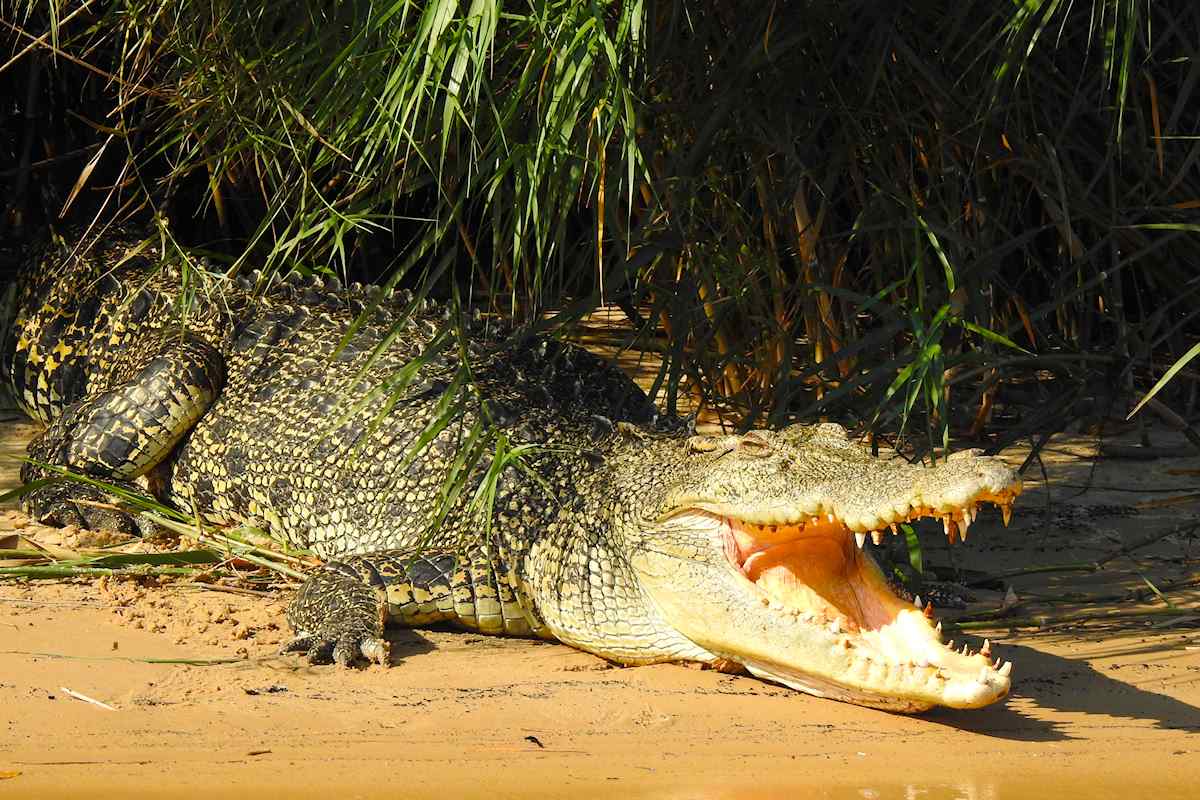
Arnhem Land covers an incredibly vast area of 100,000 square kilometres. It is one of the last areas where a relatively traditional life for the Aboriginal people still survives. There are 20 Aboriginal dialects still spoken in Arnhem Land and many people are fluent in seven local languages as well as English!
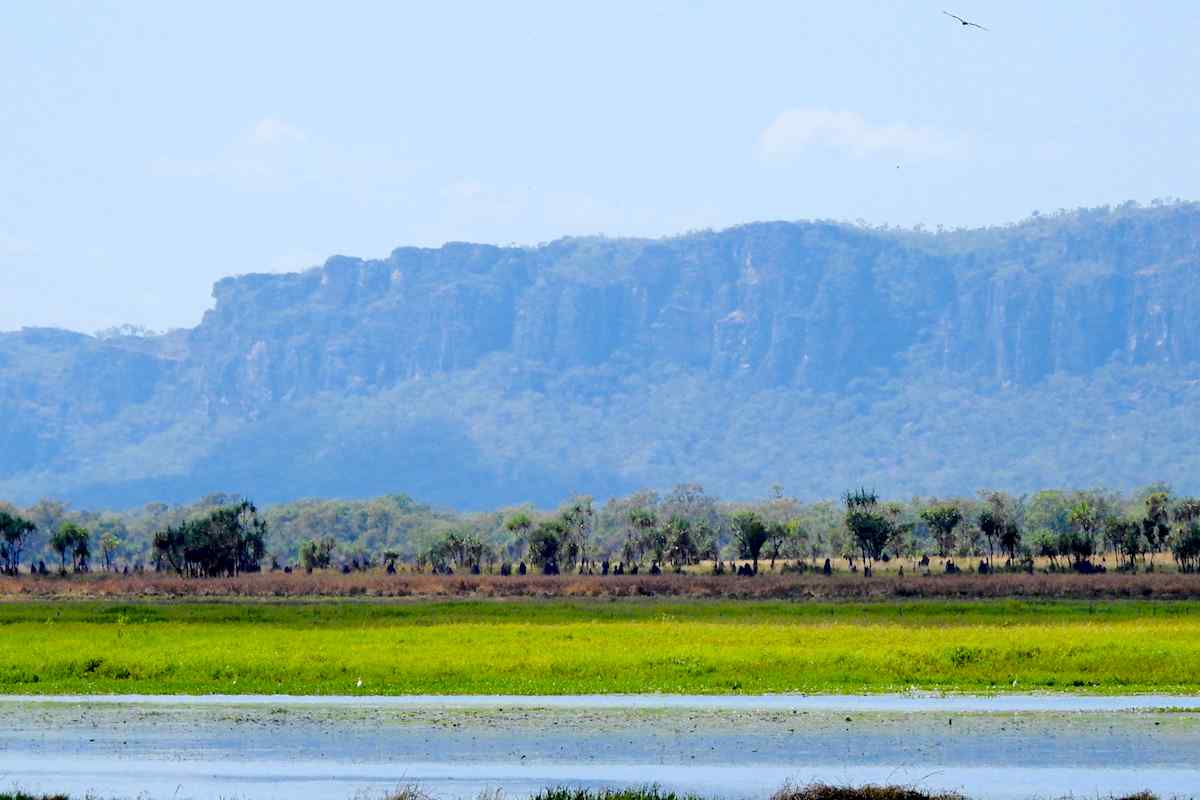
Gumbalanya is a neat town surrounded by the imposing Arnhem escarpment. During The Wet, the town is isolated by floodwaters so there is no easy access to supermarkets for four months at a time. With a population of around 1200, the people use the surrounding countryside, hunting and foraging for food in their rich environment.
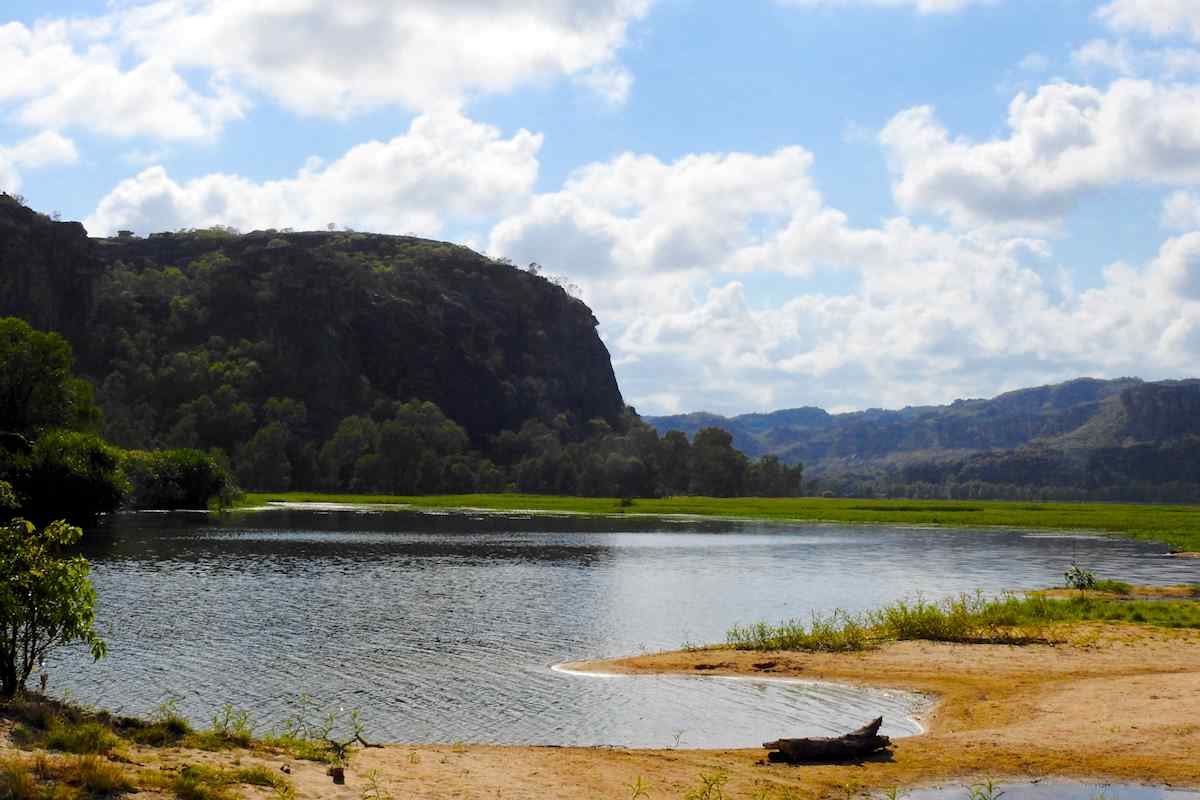
Inkiyu billabong is a sacred site we were given permission to visit. Wandering amongst a grove of melaleuca or paperbark trees beside the billabong was just amazing.
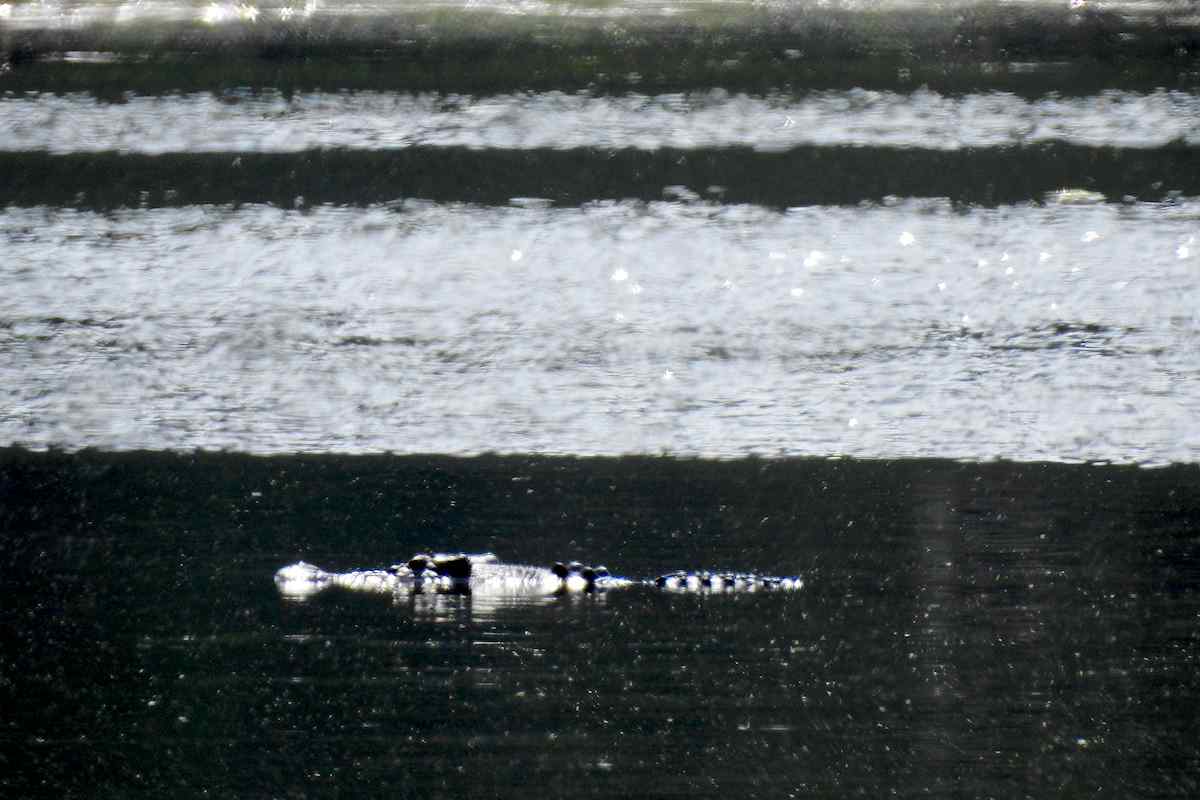
We could see crocs in the water, so it pays to stay well back.
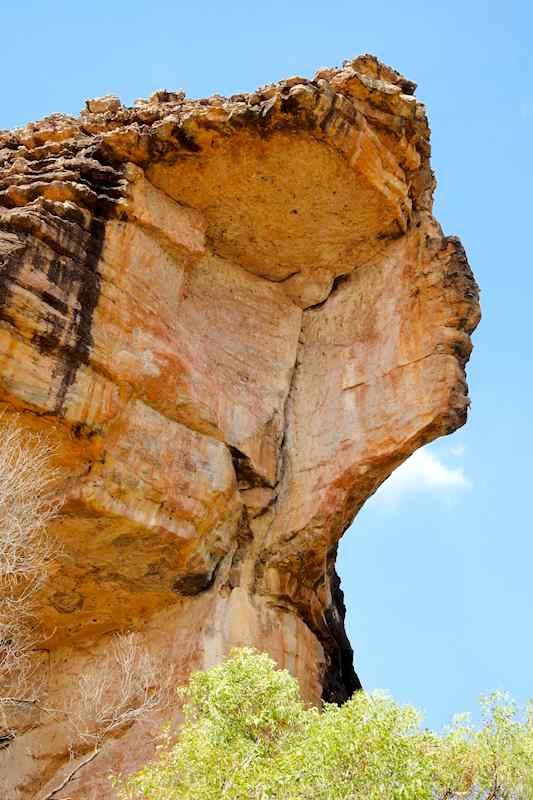
We visited a men’s site, where the boys were trained in to use spears. As a display of skills, spears were thrown upwards towards the cliff face and the best skilled hunters could wedge their spears into cracks in the rocks.
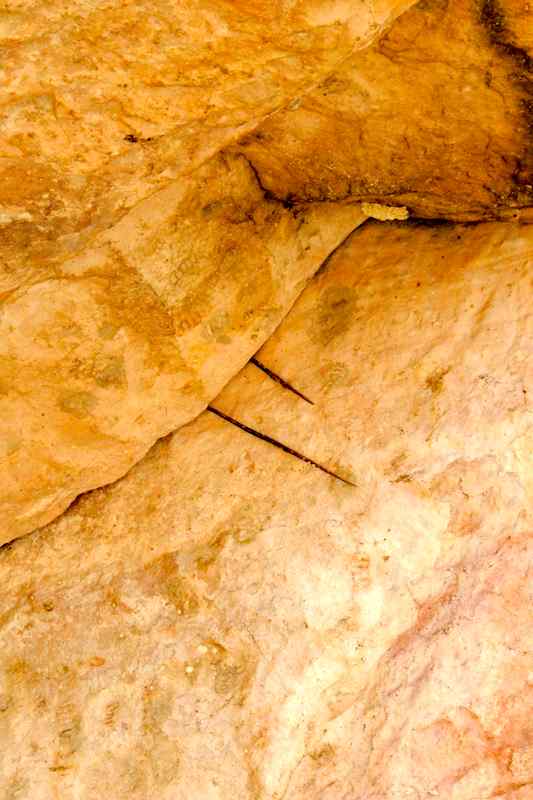
This practice stopped in the 1920s, so any remaining spears are at least 100 years old.
Nearby is an art site which we were privileged to visit. There are beautiful paintings of fish and tortoises that would be been caught in nearby billabongs.
Underneath the artwork is a cave that contains ancient human bones. It is estimated these bones are around 2,000-3,000 years old.
For cultural reasons, no photographs were permitted at this spiritual place.
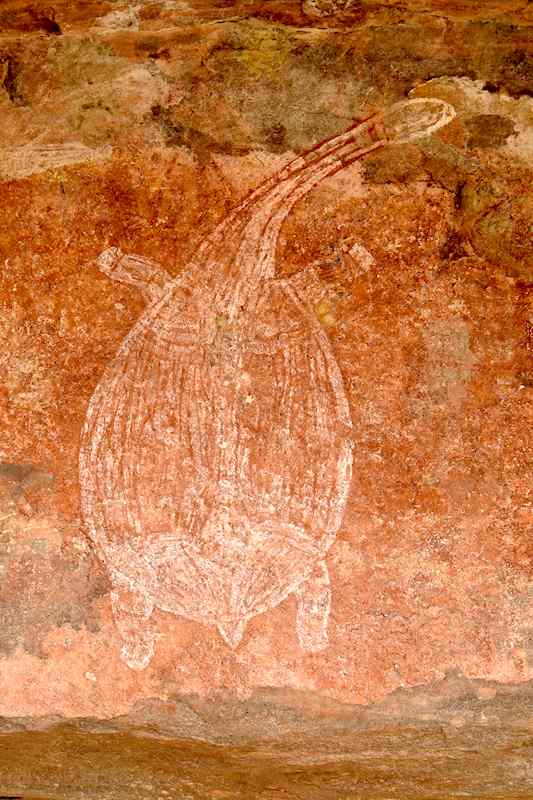
(This tortoise is from another location but shows the x-ray style of painting depicted at this site).

